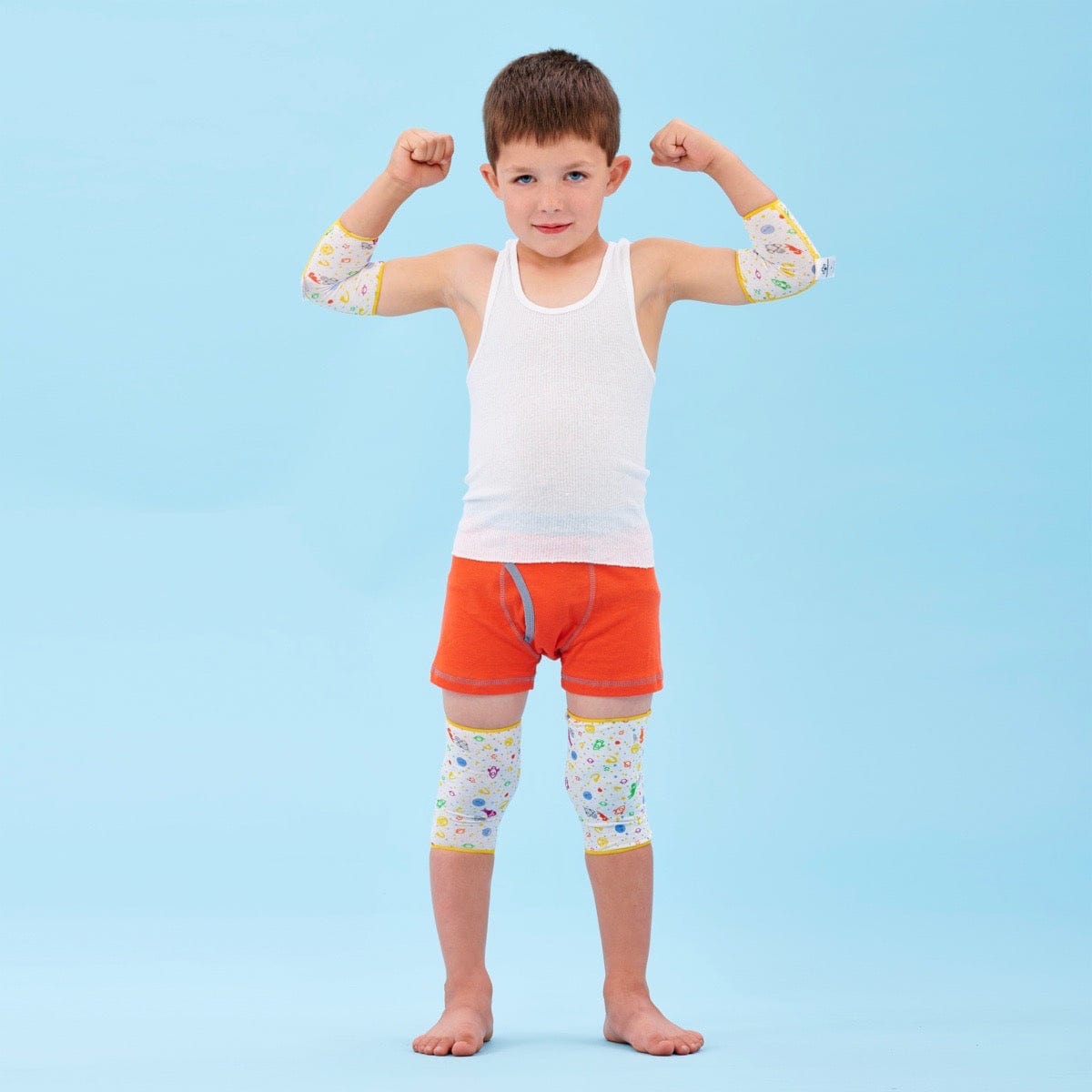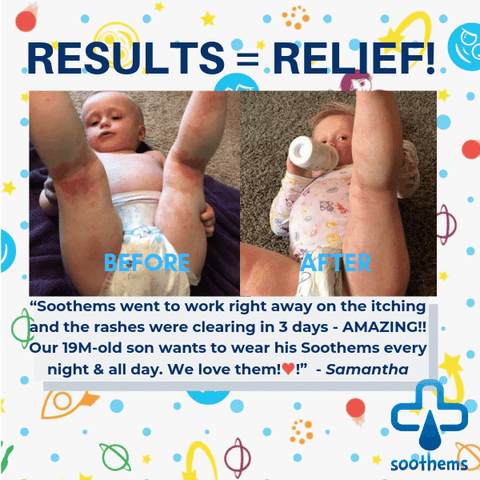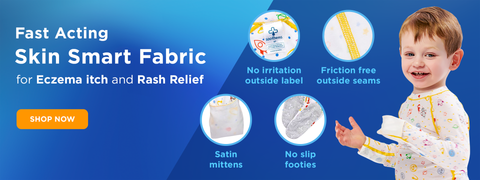First and foremost, there is no such thing as a CHEMICAL FREE fabric or made without chemicals. There are fabrics that are made with SAFE TEXTILE CHEMICALS and additives that will help your skin.
The fact of the matter is that all commercial fabrics use chemicals in the finishing. And “White” fabric is bleached white instead of being dyed but uses similar amounts of the same chemicals to be finished. Why would you want to trust your sensitive skin to an eczema clothing brand that doesn’t understand fabrics, research, and testing?
This article and the accompanying research will help you understand what to look for from fabrics designed for people with sensitive skin, eczema and contact dermatitis and the governmental agencies and third-party, independent labs that make sure your skin is safe from harmful chemicals.
The Truth About Chemical-Free Fabrics
The statement chemical-free fabric is completely wrong and untruthful for all commercially available textile products including organic or natural fiber fabrics. Organic fabric means that the cotton (or raw material also applies to wool, silk, bamboo, etc.) was grown organically (without chemicals), but the processing of organic fibers into a woven or knitted fabric uses approximately 20% of the weight of the fabric in various chemicals (this includes white, undyed fabrics). An eczema brand of clothing that claims their product is “chemical-free” shows they do not understand textiles, testing for harmful chemicals or they are being dishonest with customers. Current textile manufacturing standards are carefully guided and enforced by the CPSIA, EPA, REACH (EU) and audited by organizations like EWG, bluesign®, and Oeko-Tex® to ensure that no harmful substances or chemicals are used in processing commercial fabrics. And scientific advancements in textiles have created a whole new world of smart fabrics and now there are many benefits of carefully tested additives that enhance the performance benefits of skin smart fibers for athletic wear, fashion, military, and medical purposes.
Soothems: Less Expensive and More Effective than so-called chemical-free eczema clothing.
TEWLTect® the fabric used in Soothems has been dermatologist tested using the Human Repeated Insult Patch Test (HRIPT or Patch Test) and shown to be negative (no skin irritation) and allergy-free. TEWLTect is developed using advanced textile sciences with global partners that use only raw materials that are OEKO-Tex Standard 100 certified safe for infant skin and produced in Bluesign® approved facilities.
Soothems have been thoroughly tested at internationally recognized independent labs and been REACH certified to be free from harmful chemical, metals, and irritants such as Formaldehyde, lead, mercury, silver, chromium, and other heavy metals, phthalates and other endocrine disruptors.
Contact Dermatitis
Even with all of this oversite in the textile industry, there are still valid concerns for skin irritation from textiles. This skin irritation is called contact dermatitis.
Contact Dermatitis is a type of eczema and is often confused with atopic dermatitis because of the tender, sensitive skin symptoms like a red rash, hot burning sensation, urge to itch and potential “weeping sores or blisters”.
Contact dermatitis (or allergic contact dermatitis as it is sometimes known) occurs when the skin comes into contact with chemicals or physical substances that cause an allergic or irritant reaction. Contact dermatitis frequently can be caused by an allergy, or because of the epidermis or the external protective layer of the skin gets damaged. The allergic reaction, in this case, an itchy rash, is your immune system kicking in when contact with the trigger and the body makes antibodies including histamines to fight the irritation. Typically, you do not have a noticeable allergic reaction or a rash from the first contact your skin has with something you are allergic to. The first contact sensitizes your skin and you could have an allergic reaction the next time you are in contact with the trigger. Often people do not even realize they are allergic to something until the second time they touch the trigger. Some allergic reactions are not noticeable until a few days later, some are an immediate reaction.
Allergic Contact Dermatitis Triggers:
- Poisonous plants such as poison ivy, poison oak, and poison sumac
- Nickel, a metal found in jewelry and belt buckles and chromium, or other metals
- Leather (specifically, chemicals used in tanning leather)
- Some fabrics made from fibers like wool and specifically, chemicals used in fabric finishing.
- Certain topical antibiotics, and medications you put on your skin
- Latex gloves or rubber shoes
- Citrus fruit, especially the peel
- Fragrances in used soaps, shampoos, lotions, perfumes, and cosmetics
Irritant Contact Dermatitis:
Different from allergic contact dermatitis which involves a problem with your immune system and irritant dermatitis typically occur when the surface oils on the epidermis or skin surface are stripped away and the skin comes into contact with an irritant. The longer the skin stays in contact with the irritant the worse the Irritant Dermatitis rash becomes.
Allergic and Irritant Dermatitis Symptoms:
The two types of dermatitis share many similar characteristics. One notable difference is that Irritant dermatitis rashes usually show up immediately. Allergic contact dermatitis rashes may take a day or two to appear.
Many of the symptoms are similar: In both cases, your skin may blister, or you may get a raised red rash. Your skin will itch and maybe burn.
- Symptoms of a contact allergy are usually right around where you touched the thing you're allergic to.
- Irritant contact dermatitis (skin damage) tends to burn and be more painful than itchy.
Treating Allergic and Irritant Dermatitis:
The simple advice is if you know what caused the rash - avoid contact!
- Carefully wash the rash with fragrance-free, mild soap and cool water right away. This will help get the irritants off of the skin’s surface, helping to stop the rash from becoming worse and washing will also help reduce the symptoms like itchiness and burning. When the rash covers only a small area, you can try a hydrocortisone cream may be all you need for relief.
- For blisters, apply a cold moist compress for 30 minutes, three times a day.
- If your skin is rough, irritated and damaged, apply moisturizers on it several times a day to help restore the protective layer. Doctors recommend covering with a soft cloth garment like Soothems to help keep the moisturizer in place, increase the efficacy and prevent it from messing everything it touches.
- Oral antihistamines can help relieve itching. Don't use an antihistamine lotion unless your doctor suggests it because it could cause skin irritation or an allergic reaction.
If for any reason you are concerned about the rash, if it becomes very painful or if it has not started to clear in a couple of days seek professional medical advice immediately.






Leave a comment
All comments are moderated before being published.
This site is protected by hCaptcha and the hCaptcha Privacy Policy and Terms of Service apply.